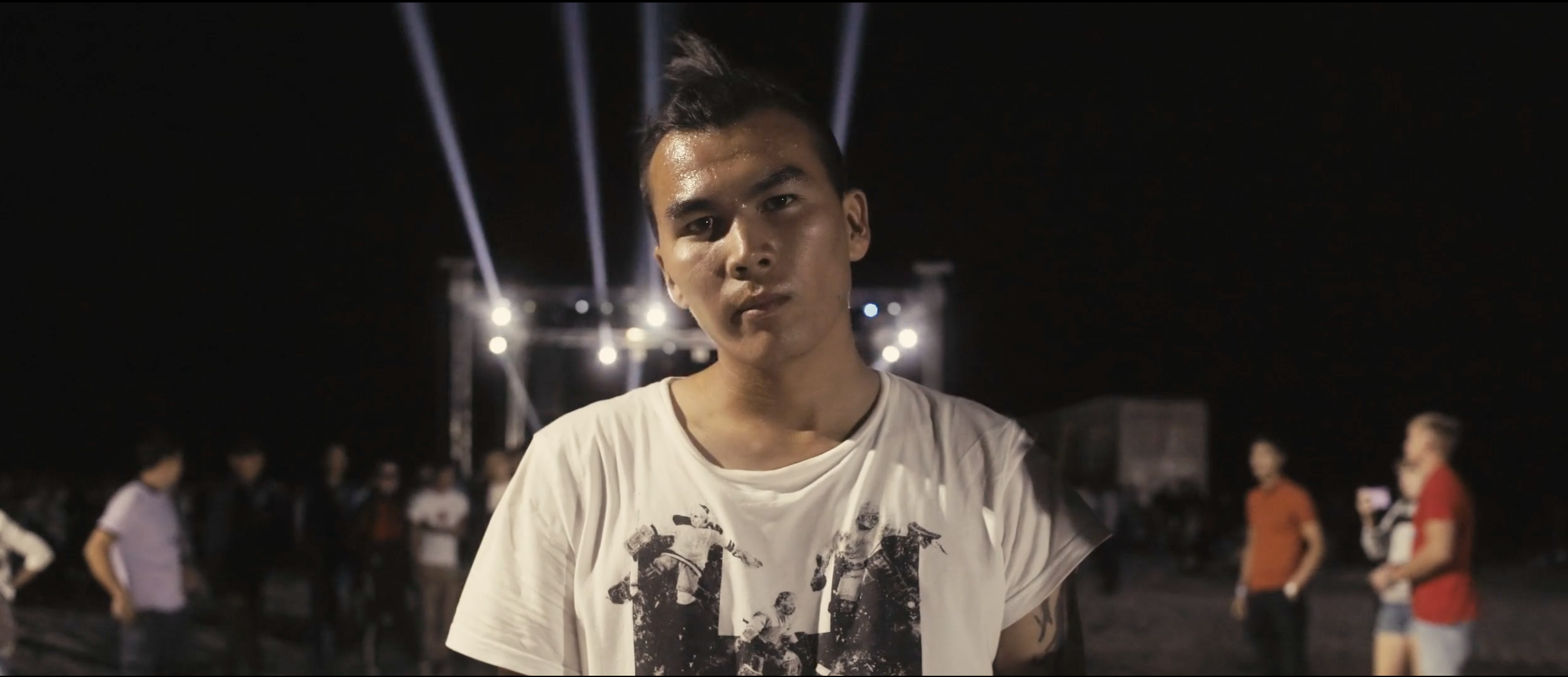Waiting for the Sea: An Interview with Director George Itzhak
Waiting for the Sea from George Itzhak on Vimeo.
The film centers on a techno music festival in Moʻynoq, in the deserts of western Uzbekistan, in the region of Karakalpakstan, on the shores of what was once the Aral Sea. What inspired you to make a film about this subject?
For me, this project was a homecoming. I was born in Tashkent in 1992, and my family emigrated to New York in 1993. We never returned, and as many immigrants do, we assimilated into American life. My connection to my homeland was severed, and as I grew as a filmmaker, I found myself always returning to imagery and sound from Uzbekistan. It was clearly in my DNA, and something I couldn’t shake.
Growing up, all my references of Uzbekistan were very archaic. Stories from my grandparents, old Soviet films and newsreels… it was all rooted in the past. In 2019, I discovered the work of Uzbek photojournalists who were chronicling youth culture and modern-day Uzbekistan. Those images really opened my eyes and I realized that Uzbekistan was very different than what I assumed. It will full of juxtapositions and interesting sights and sounds. I knew I had to discover the country on my own terms.
The perfect vehicle to do this was a film about Uzbekistan’s burgeoning electronic music scene and the Stihia festival. I felt that telling this story would not only be a personal journey for me, but a chance to share with the world what Uzbekistan looked like and sounded like. Even in urban educated cities in America, I would say most people have very little understanding of Central Asia. This film is my attempt to share this fascinating place with others who otherwise wouldn’t have exposure. Electronic music was a bridge to achieve this because it is very accessible to the West.
I designed the structure of the film to take the audience across the span of Uzbekistan — starting in urban Tashkent, stopping through ancient Bukhara, and then arriving in Karakalpakstan and the Aral Sea, a region that may be barren and devastated, but is now the site of unstoppable creative energy.
The festival was organized and seems to have been largely attended by urban, Russophone Uzbekistanis from Tashkent and other large cities. What was the local response in Karakalpakstan to the festival?
They loved it!
There might have been some issues in the first edition of Stihia, with the festival shut down earlier by authorities. But for the second year, the Stihia organizers built much stronger relationships with Moʻynoq and Karakalpakstan authorities and there was a large level of cooperation.
I spoke to several preteens and teens in Moʻynoq about the festival, and they were all thrilled to see their small town the center of so much attention. These are young people who normally don’t have so much exposure to international travelers, so I think the experience of Stihia really broadens horizons for them. It strengthens their pride in their homeland.
Music is a tool for unity. And despite differences between Karakalpak locals and urban hipsters from Tashkent, Moscow, Almaty, and Europe, everyone at the festival joined together in what felt like a very ritualistic ceremony, dancing and gyrating around a DJ under the stars. As was expressed in my film, it felt like Babylon — people spoke different languages but in that moment they were united and one cohesive being. I recall one particularly nice scene, of an Israeli couple teaching local Moʻynoq kids new dance moves, and vice versa.
Watching the film, two prominent narrative themes appeared for me. First, as Yuri says “Things can’t stay the same forever.” Uzbekistan has been opening up and changing since the death of President Islam Karimov in 2016. To what extent does the film reflect the changing political and cultural situation in Uzbekistan?
Uzbekistan is going through a cultural thaw in some respects – not a revolution. So the changes trickle in slowly and it’s hard to say where this process will lead the country. Time will tell. I asked the characters in my film if they felt they could have organized Stihia and the Tashkent electronic scene five to ten years prior, under Karimov’s administration. They answered yes, they felt that it would have been possible because of their determination and the desire of the people. Whether that’s true or not is unclear, but all of these cultural changes, like the emergence of a strong electronic scene, developed after 2016. From my outsider perspective, the biggest shift in Uzbekistan has been the prioritization of the tourist economy. In order for that sector to be successful, the country has to lean into positive PR, and that includes promoting “Western-facing” events like an electronic music festival. An event like Stihia fits the goals of Uzbekistan’s tourism and PR campaign, and it also fits the goals of the electronic music scene. This overlap has allowed many great things to flourish. I found that young people in Tashkent and other cities were really proud to share what Stihia was about on social media, because it was something homegrown and very near and dear to them.
When Yuri says “things can’t stay the same forever” I believe he is referring to the narrative that Uzbekistan has been fitted with by the outside world. Uzbekistan is always associated with its Silk Road past, and it’s time as a Soviet state. The problem is, these are archaic and stale identities, and the country shouldn’t have to live with the burden of them forever. It’s a dynamic place building its future every day, like every other place.
A second theme is related to the Aral Sea, with the concert taking place in the so-called “ship graveyard” where once the sea, or more accurately lake, used to be. The human-caused shrinking of the sea has been an economic and ecological disaster for the region. How important do you think this disaster is for the message of the film?
One of the goals of this film, and of the electronic music festival that is profiled, to create a new legacy for the Aral Sea region. It is undeniable a place that has been devastated economically and environmentally. Many films and documentaries have told that story. But I felt there was another layer to the story, one of hope. The sea may never come back, but that doesn’t mean this region should be condemned forever. It can be birthplace of something beautiful like the Stihia festival. It can become a place of culture, connection, and escape from every day life. The title of my film, Waiting for the Sea, alludes to the anticipation of change and the future, not a literal return of the sea.
What happened at the Aral Sea has influenced generations and imparted a certain trauma onto the land and spirit of the people. You see this in the character of Vlad Zuev, an ethnic Russian who born in Moʻynoq and never left. The Aral Sea holds a very emotional place in his heart, and at the end of the film, we travel with him to what remains of the Aral, and into his symbolic heart and childhood. This place may be considered a disaster by the rest of the world, but for Zuev and many others like him, it is home, his ancestors, his heart.
The festival is called “Стихия,” a Russian word which could be translated as one of the four elements or a force of nature affecting the surrounding environment. How does the documentary reflect these themes?
Vlad Zuev, the life-long Moʻynoq resident, had a beautiful way of describing the Aral and Stihia festival. He ascribed mythical qualities to it all, saying that the music and energy generated by the electronic music festival just wake up the God of the Aral and encourage him to bring the water back.
The creator of Stihia, Otabek Suleimanov, also likens his work to that of ancient rainmakers, who call for rain and water to fall from the heavens.
This, of course, is not how the Aral Sea will return to its former glory. But the overarching theme of this film is that human creativity and spirit can bring about change — that even in a godforsaken place, the hope, optimism, and ingenuity of humans can bring about beauty and a better future. The Aral Sea might not come back — but the region can still flourish and grow. This is further reflected in the future projects that the Stihia creators want to pursue, including planting desert trees in the seabed of the Aral.




